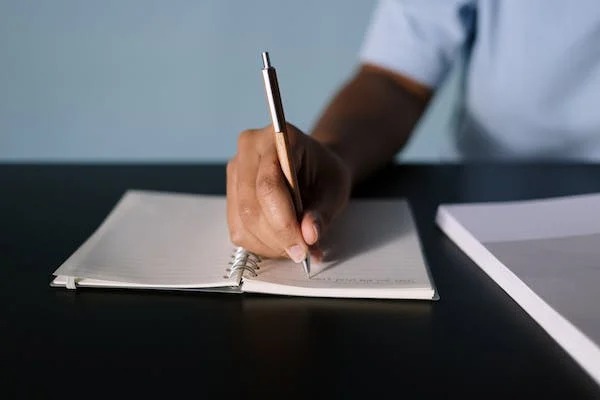Small, medium, or large pens? Which are better? There are pens in every size. Which should one choose? In this discussion, I favor the bigger options, but I will try to stay fair.
Big or heavy?
What is the optimal weight of a pen? The number is somewhere between 10 and 50 grams. Anything lighter will be hard to control, anything heavier will be tiresome to hold for several hours and less than comfortable in a pocket.
A classic pen, like Parker Jotter, will weigh around 16 grams, while Kaweco Sport may weigh 46 grams. At a shorter length, Kaweco relies on weight for easy control. Also, you do not get a lot of torque from a shorter pen.
Pens that weigh more tend to feel more substantial, and thus often justify their price tag. Some luxury pens are heavy, but definitely not all of them.
Materials are important
Weight is determined not just by size, but by the material and its qualities. Ebonite is very light and when covered with Urushi can be beautiful. Japanese pens do not smell of burned rubber, like cheap Indian copies.
European pens usually are built from all sorts of plastic. Better quality plastics are fondly named “precious resins”. Urushi lacquer may be a natural resin, but most pens are built from synthetic materials.
Metals in all pens are used sparingly, as metals are heavy. In precision-tooled American pens, the steel used for the barrel is probably 0.4mm thick. Brass or copper weighs slightly (~15%) more than steel. Steel weighs significantly (~x3) more than aluminum. Silver and gold are typically used as a relatively thin galvanized layer. The exception: golden nibs. 14 carat gold is 58.5% pure.
Wood is rarely used in mass-produced pens but often used in hand-made units. It weighs significantly (~x5) less than aluminum, but more (x1.5) than ebonite.
There are huge variations in the properties of the materials, so the numbers are very sketchy. Typically more expensive pens will have metal parts, including for example golden nibs and gold-plated steel clips. These parts add to the weight.
The ideal diameter or grip?
The most ergonomic pens are tip-heavy with a relatively wide grip. A wide grip requires less finger clenching. A soft gel grip is often easier on hands than hard plastic on metal. Moreover, some grips get a triangular shape to facilitate the proper dynamic tripod way of holding a pen. Special pens for elders are overweight with extra-wide grip. Pencils often get seriously fatter around the grip.
In a fountain pen, the grip is somewhat slimmer than the barrel. Why is that? The grip is limited to allow for beautiful cap placement. The cap and the barrel of the per are roughly of the same diameter. Fountain pens are also typically not as long as pencils and ballpoint pens because the cap can be posted on the pen, making it appear longer.
The cap is a serious issue. If it has threads, the threads interfere with the hand around the grip. When there are no threads, the posting is not as good. Threads also sometimes help to seal the pen. Platinum 3776 has a very nice sealing mechanism in the cap called slip and seal. The height of the grip above the nib is also an issue. Some fountain pens, like Lamy 2000 and Aurora Duo Cart, have partially covered so-called “hooded” nib to facilitate low grip.
The ideal tip
Pens have many different tips. Most people love beautiful golden nibs of fountain pens, but do not love them enough to pay for them. For most purposes, steel nibs are just as good. The manufacturing and grind of the tip are more important than the actual material used. The best thing about a big nib: it does not hide the letters and allows a very clear view. Big nibs are beautiful, but very big nibs can be used only with very big pens.
For very accurate writing we use small nibs. Japanese fountain pens can have ultra-extra-fine nibs. Japanese gel refills can have needle rather than a ball to be accurate with any ruler. The OHTO needle point gel refills are very fine, but also very fragile and need to be protected. In a similar way, some mechanical pencils may require lead sleeve protection. Most of us will use a ballpoint pen with a conical tip, but Pilot also offers a very specific tip: hi-techpoint V5 in its rollerball.
The other end of the scale is occupied by calligraphic tips. Parker parallel pen has a huge nib, like the tip of highlighter, up to 6mm. Music nibs specially designed for music are also very wide. These massive tips need to slits to ensure a proper flow of the ink.
Bold, double broad, stub and italic tips are between .7mm and 1.9 mm wide. Parker Gel G2 bold pen has a wide 1mm ball. It is very smooth and the feeling can be described as buttery or juicy.
Fountain pen mechanism
Some pens are very simple. Consider eyedropper fountain pens. They are huge vessels of ink. The entire body of the pen is filled via an external huge syringe. It is a lot of ink even for a very ink-hungry pen. The bigger the body, the more ink it can take. Next, we have fountain pens with a built-in piston or vacuum pump like Pilot 823. These pens need space for the mechanism, so they need to be huge for a serious volume of ink.
In “ancient times” there were sac actuating mechanisms like crescent or lever. These mechanisms almost did not survive, since sacs are less robust than pistons.
The more modern easier-to-clean mechanism is a cartridge or converter. Pilot 912 has a huge con 70 converter, and Lamy has also a very large converter, compatible with many piston mechanisms. These pens are relatively large. Most converters are very small yet easy to clean. They end up really fast. Cartridges are often used when the converter is empty.
Other mechanisms
Multipurpose pens are absolutely huge. They need to switch between several small mechanisms, say three. The more stylish mechanism is the twist: twisting the pen switches between 3 refills: a writing pen, a highlighter, and a mechanical pencil.
Ballpoint pens and mechanical pencils have buttons. Regular push-button mechanisms can be small. However, only large manufacturers can make them properly. And they are put on mass-produced relatively cheap models. Smaller manufacturers making high-end pens use other mechanisms, like twisting the button or bolt-action mechanism. I find the bolt action mechanism very satisfying, but it makes the pen taller by the size of the bolt. The twist mechanism is smaller, but not really suited for one-hand operation.
Fountain pens with small nibs (Pilot vanishing point, Lamy dialog) can also have a vanishing point mechanism very similar to what we see in ball pens. The mechanism retrieves the nib, and the clip is actually in the grip. Many collectors hold these pens for curiosity since the clip often interferes with grip.
Refills
A fountain pen is only as good as its nib. Ball pens are as good as the refill. Big pens allow huge and beautiful refills. While small pens have miniature D2 refills that look poor and do not last much, the larger pens can boast more vibrant refills. The broader the nib, the more ink is required. The less viscous ink like fountain pen wet ink runs out faster.
So basically a good refill starts with Parker G2, Pilot G2, and standard European rollerball sizes (those are actually different formats). Pocket pens often have short refills. They are not cost-efficient.
Using a rollerball refill, fountain pen ink, and a syringe you can try to make your own refill. Only, it may cost you. The ink may leak and ruin your cloth.
In a similar way, with silicon grease, you can convert almost any converter-style fountain pen into an eyedropper. That may be a lot more ink storage, but there is a chance of leakage. As an alternative, you may take with you a traveling ink well. That will cost you, but at least you will be able to empty your pen before you go on a plane and fill it back after landing without risking running out of ink or spilling ink all over. You may use rubber gloves to avoid ink stains…
Portability
We love small pens not just for their lower price tag, but also for portability and compatibility with kids. Children have small hands, yet the best time to start using a fountain pen is at school.
At school, we write a lot and need to set good handwriting habits. We also have more time to play with pens and experiment. Additionally, we generate our aesthetic perception. So, school is a great time to get a great pen. I go my first Parker Jotter when I was 14 years old, and I was faithful to the brand for decades.
What we need at school is a pen that we can take everywhere, and if needed put it into our pocket. A huge pen will not go into a pocket or will look ridiculous in it. A small pocket-size pen is significantly more portable.
A small pen can be also built from very durable materials without becoming prohibitively heavy. I think a good metal pen can stop a sword. I will try that someday. An athlete can fall and get a hit. It can be a pity if a pen explodes when this happens, leaving a permanent mark. A small durable pen is less likely to break.
Other than that, we will usually go for the largest pen suitable for the size of our hands. A person with larger hands can comfortably hold a larger pen and will struggle with a small pen.
King of pens
So the next time you see a collection of pens, go to the king of pens and pay your respect. It can be Sailor 1911 King of Pens, but there are larger titans. Pilot Custom Urishi, Pelican M1000, and Visconti Homo Sapiens, and Montblanc Le Grand are huge, magnificent, and expensive. Not as expensive as collectible pens, but at around 600$ per pen they will command your respect.

